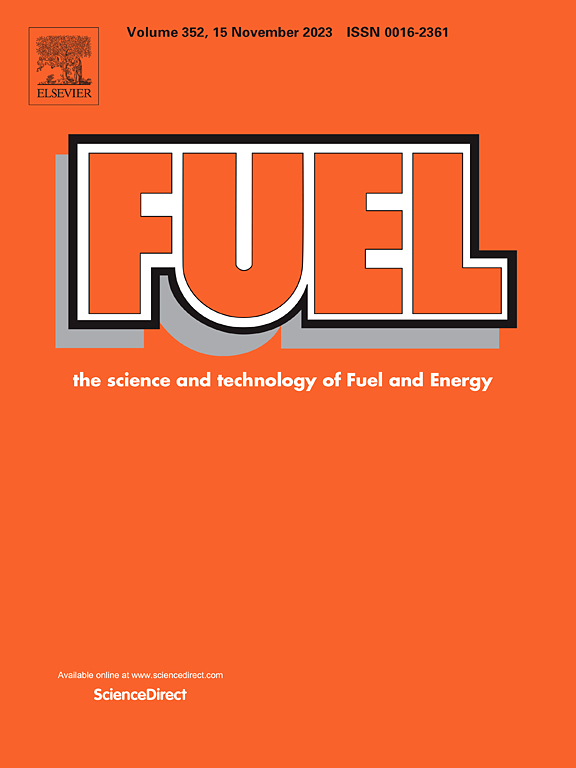双金属金属有机骨架作为中性和碱性环境中水分解的多功能电催化剂
IF 6.7
1区 工程技术
Q2 ENERGY & FUELS
引用次数: 0
摘要
金属有机骨架(mof)作为水分解催化的潜在候选物受到了关注,因为它们能够提供适当的表面活性位点来促进反应。传统上,贵金属用作电催化剂。本研究提出了一种制备六方双金属mof (NiCo-MOF/NF)用于HER(析氢反应)和OER(析氧反应)的方法,采用简单环保的一步溶剂热法。由于其独特的多孔结构和纳米级晶体框架。先进的电催化剂(NiCo-MOF/NF)具有广泛的电化学表面积,具有极低的过电位(在10 mAcm - 2时,HER/OER为60 mV/150 mV)和非常高的电流密度(HER/OER为460 mAcm - 2 / 471 mAcm - 2)的电化学性能。在HER和OER分别为28 mV dec−1和45 mV dec−1时,NiCo-MOF/NF电催化剂的Tafel斜率被测得,表明催化剂表面的快速动力学。此外,它在100小时的时间电位测定稳定性测试中表现出优异的稳定性。本研究报道了一种在碱性和中性介质中稳定的双金属NiCo-MOF/NF电催化剂。本文章由计算机程序翻译,如有差异,请以英文原文为准。

Bimetallic metal-organic frameworks as versatile electrocatalysts for water splitting in neutral and alkaline environments
Metal-organic frameworks (MOFs) have gained attention as potential candidates for water-splitting catalysis due to their ability to offer appropriate surface-active sites that facilitate the reaction. Traditionally, precious metals served as electrocatalysts. This study presents a less explored method of preparing hexagonal Bimetallic MOFs (NiCo-MOF/NF) for HER (Hydrogen Evolution Reaction) and OER (Oxygen Evolution Reaction) using a simple and environmentally friendly one-step solvothermal approach. Due to its distinctive porous structure and nano-sized crystalline framework., along with its extensive electrochemical surface area, the advanced electrocatalyst (referred to as NiCo-MOF/NF) exhibited outstanding electrochemical performance characterized by an impressively low Overpotential (60 mV/150 mV at 10 mA cm−2 for HER/OER) and a very high current density (460 mAcm−2 / 471 mAcm−2 for HER/OER) within a narrow potential range. The Tafel slope of the NiCo-MOF/NF electrocatalyst was measured at 28 mV dec−1 for the HER and 45 mV dec−1 for the OER, indicating rapid kinetics at the surface of the catalyst. Furthermore, it displayed excellent stability during a 100-hour stability test of chronopotentiometry. This study reports a stable bimetallic NiCo-MOF/NF electrocatalyst in alkaline and neutral media.
求助全文
通过发布文献求助,成功后即可免费获取论文全文。
去求助
来源期刊

Fuel
工程技术-工程:化工
CiteScore
12.80
自引率
20.30%
发文量
3506
审稿时长
64 days
期刊介绍:
The exploration of energy sources remains a critical matter of study. For the past nine decades, fuel has consistently held the forefront in primary research efforts within the field of energy science. This area of investigation encompasses a wide range of subjects, with a particular emphasis on emerging concerns like environmental factors and pollution.
 求助内容:
求助内容: 应助结果提醒方式:
应助结果提醒方式:


